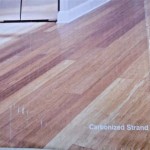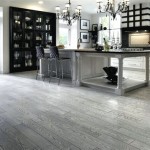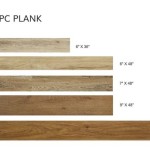Marble Tile Flooring: Pros and Cons
Marble tile flooring presents an elegant and timeless aesthetic, making it a popular choice for homeowners seeking a luxurious and sophisticated look. However, like any flooring material, marble has both advantages and disadvantages that must be considered before making a final decision. This article explores the various pros and cons associated with marble tile flooring, providing a comprehensive overview to aid in informed decision-making.
Aesthetic Appeal and Variety
One of the primary advantages of marble tile flooring is its undeniable aesthetic appeal. Marble is a natural stone renowned for its unique veining patterns and inherent beauty. No two marble tiles are exactly alike, ensuring a one-of-a-kind installation that adds character and visual interest to any space. The veining, which is a result of mineral impurities present during the stone's formation, creates intricate and captivating designs that can range from subtle and delicate to bold and dramatic.
Furthermore, marble is available in a wide range of colors, from classic white and creamy beige to rich blacks, greens, and even pinks and reds. This extensive color palette allows for seamless integration with various design styles and color schemes, whether the goal is to create a minimalist, modern space or a more traditional and opulent environment. The natural variations in color and veining contribute to the stone's authenticity and enhance its visual appeal.
Marble tiles are also available in various sizes and shapes, offering further design flexibility. Larger format tiles can create a sense of spaciousness, while smaller tiles can be used to create intricate patterns and mosaics. Common shapes include square, rectangular, triangular, and even hexagonal, allowing for customized designs that reflect individual preferences.
The inherent beauty of marble can elevate the overall ambiance of a room, creating a sense of luxury and sophistication that is difficult to replicate with other flooring materials. Its timeless appeal ensures that it will remain a stylish choice for years to come.
Durability and Longevity
Marble is a relatively durable material, capable of withstanding moderate foot traffic and everyday wear and tear. When properly installed and maintained, marble tile flooring can last for decades, making it a worthwhile investment for homeowners seeking a long-lasting flooring solution. However, it is important to note that marble is not as hard as some other natural stones, such as granite, and can be susceptible to scratching and etching.
The durability of marble is influenced by several factors, including the type of marble, the thickness of the tiles, and the quality of the installation. Some types of marble are denser and more resistant to damage than others. Thicker tiles are generally more durable than thinner tiles. A professional installation is crucial to ensure that the tiles are properly supported and that the grout lines are sealed to prevent moisture penetration.
Despite its relative durability, marble is a porous material, meaning it can absorb liquids. This porosity makes it susceptible to staining if spills are not cleaned up promptly. Sealing marble tiles is essential to protect them from stains and moisture damage. A high-quality sealant will create a protective barrier that prevents liquids from penetrating the stone. Sealing should be done upon installation and reapplied periodically, as recommended by the sealant manufacturer.
Proper maintenance is crucial to preserving the durability and appearance of marble tile flooring. Regular cleaning with a pH-neutral cleaner is recommended to remove dirt and debris. Abrasive cleaners and harsh chemicals should be avoided, as they can damage the surface of the marble. Regular sweeping or vacuuming can help prevent scratches from dirt and sand.
With proper care and maintenance, marble tile flooring can provide years of lasting beauty and durability, making it a valuable addition to any home.
Maintenance Requirements and Costs
While marble offers numerous aesthetic and durability benefits, it also requires a degree of maintenance to retain its beauty and longevity. Understanding the maintenance requirements and associated costs is crucial before deciding to install marble tile flooring.
As previously mentioned, sealing is a critical aspect of marble maintenance. The frequency of resealing depends on the type of marble, the sealant used, and the level of traffic the floor receives. Generally, resealing is recommended every one to three years. The cost of sealing can vary depending on the size of the area and whether the homeowner chooses to do it themselves or hire a professional.
Regular cleaning is also essential to prevent dirt and debris from scratching the surface of the marble. A pH-neutral cleaner specifically designed for natural stone should be used. Avoid using acidic or alkaline cleaners, as these can damage the marble. Spills should be cleaned up immediately to prevent staining. Use a soft cloth or mop to avoid scratching the surface.
Marble is susceptible to etching from acidic substances, such as vinegar, lemon juice, and coffee. Etching is a chemical reaction that leaves a dull mark on the surface of the marble. While etching can be minimized by promptly cleaning up spills, it may require professional restoration to completely remove. Professional restoration services can be costly, depending on the extent of the damage.
The initial cost of marble tile flooring is generally higher than that of other flooring materials, such as ceramic tile or laminate. The cost of marble itself can vary significantly depending on the type, quality, and size of the tiles. Installation costs can also be higher due to the specialized skills required to properly install marble. Considering these factors, marble tile flooring represents a significant financial investment. However, its long lifespan and enduring beauty can make it a worthwhile investment for those who appreciate its unique qualities.
Susceptibility to Staining and Etching
Marble's porous nature makes it susceptible to staining from various substances. Liquids like red wine, coffee, juice, and oil can penetrate the surface of the marble and leave permanent stains if not cleaned up immediately. The porosity also makes marble more prone to absorbing moisture, which can lead to discoloration and damage over time.
The extent of staining depends on several factors, including the type of marble, the type of stain, and the length of time the stain is allowed to sit on the surface. Lighter-colored marbles are generally more susceptible to staining than darker-colored marbles. Certain types of stains, such as oil-based stains, are more difficult to remove than water-based stains.
Etching is another common concern with marble. Acidic substances, such as vinegar, lemon juice, and cleaning products containing acids, can react with the calcium carbonate in marble and cause a chemical reaction known as etching. Etching results in a dull or cloudy spot on the surface of the marble, which can be difficult to remove. Unlike stains, etching is not a discoloration but a change in the surface texture of the marble.
While sealing can help to protect marble from staining and etching, it is not a foolproof solution. Spills should be cleaned up immediately, and acidic substances should be avoided on marble surfaces. Regular cleaning with a pH-neutral cleaner can help to prevent the buildup of dirt and grime, which can also contribute to staining.
In some cases, stains and etching can be removed by using specialized cleaning products or by hiring a professional marble restoration company. However, the success of these treatments can vary depending on the severity of the stain or etching. Prevention is key when it comes to protecting marble from staining and etching.
Comfort and Safety Considerations
Marble tile flooring can be quite hard and cold underfoot, which may be uncomfortable for some homeowners, especially in colder climates. The hardness of the surface can also make it less forgiving than softer flooring options, such as carpet or vinyl, which can be a concern for households with young children or elderly individuals.
The hardness of marble can be mitigated by using area rugs to provide cushioning and warmth. Radiant floor heating can also be installed underneath marble tile flooring to provide warmth and comfort. Radiant heating is a system that heats the floor from below, providing a consistent and comfortable temperature throughout the room. This is particularly beneficial in bathrooms and kitchens, where marble tile flooring is commonly used.
Marble can be slippery, especially when wet. This can pose a safety hazard, particularly in areas prone to moisture, such as bathrooms and entryways. To improve traction, consider using textured marble tiles or applying a non-slip coating to the surface of the tiles. Area rugs can also be used to provide a non-slip surface in high-traffic areas.
When selecting marble tile flooring, consider the slip resistance rating of the tiles. A higher slip resistance rating indicates a greater degree of traction. Ensure that the tiles meet or exceed the safety standards for the intended application.
Furthermore, proper installation can also contribute to safety. Unevenly installed tiles can create tripping hazards. Ensure that the tiles are properly leveled and that the grout lines are flush with the surface of the tiles.
While marble tile flooring may not be the most comfortable or safest flooring option for all situations, these considerations can be addressed through careful planning and appropriate precautions.
Environmental Impact
The environmental impact of marble tile flooring is a consideration for environmentally conscious homeowners. Marble is a natural stone that is quarried from the earth. Quarrying can have a negative impact on the environment, including habitat destruction, soil erosion, and water pollution.
The transportation of marble from the quarry to the processing plant and then to the installation site also contributes to carbon emissions. The energy required to cut, polish, and transport marble can be significant.
However, marble is a durable and long-lasting material, which can reduce the need for replacement and contribute to waste reduction. When properly maintained, marble tile flooring can last for decades, minimizing the environmental impact associated with frequent replacement.
To minimize the environmental impact of marble tile flooring, consider choosing marble from reputable suppliers who adhere to sustainable quarrying practices. Look for marble that is certified by environmental organizations, such as the Greenguard Environmental Institute. Support companies that prioritize responsible sourcing and manufacturing practices.
Recycled marble tiles are also available, offering a more sustainable alternative to virgin marble. Recycled marble tiles are made from waste marble that is collected from quarries and processing plants. These tiles have a lower environmental impact than virgin marble tiles because they do not require new quarrying.
Furthermore, proper maintenance can help to extend the lifespan of marble tile flooring, reducing the need for replacement and minimizing its environmental impact. By choosing sustainable options and practicing responsible maintenance, homeowners can minimize the environmental footprint of their marble tile flooring.
:max_bytes(150000):strip_icc()/marble-flooring-pros-and-cons-1314701-hero-5a5fae7b62fc4646a573c43ca52b521f.jpg?strip=all)
Marble Flooring Pros And Cons

10 Pros And Cons For Marble Floor Tiles Inovastone

The Pros And Cons Of Marble Tile

Marble Flooring Pros Cons All You Need To Know Atlas Tile

Pros Cons On Marble Flooring Singapore

Floor Tiles Quartz Stone Vs Marble Pros Cons

Advantages And Disadvantages Of Marble Flooring

Can You Install Natural Marble Tile In The Bathroom

Pros And Cons Of Marble Floor Tiles Rubi Blog Usa

Which Is Better Granite Or Marble Flooring Ceraite
Related Posts








